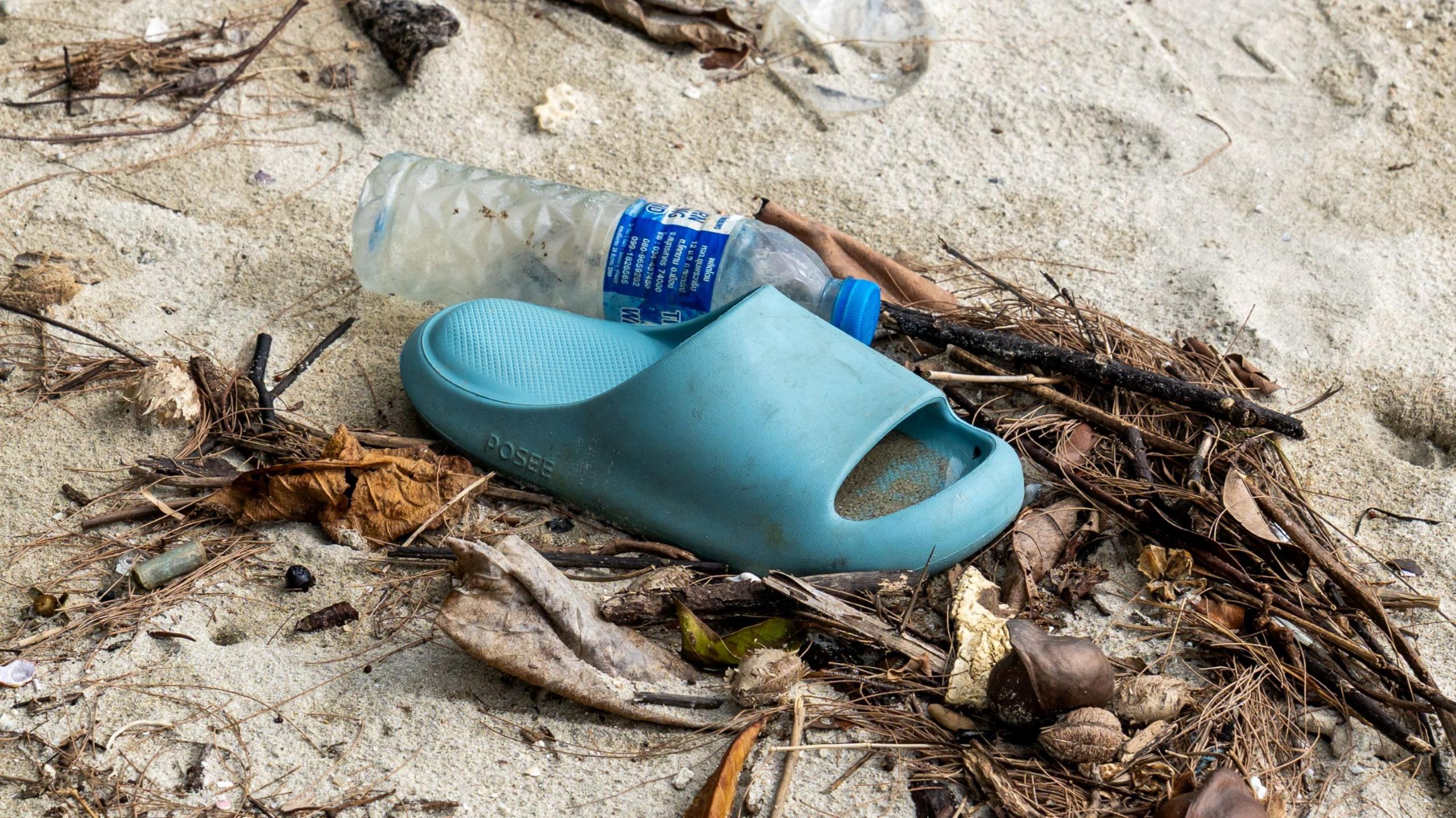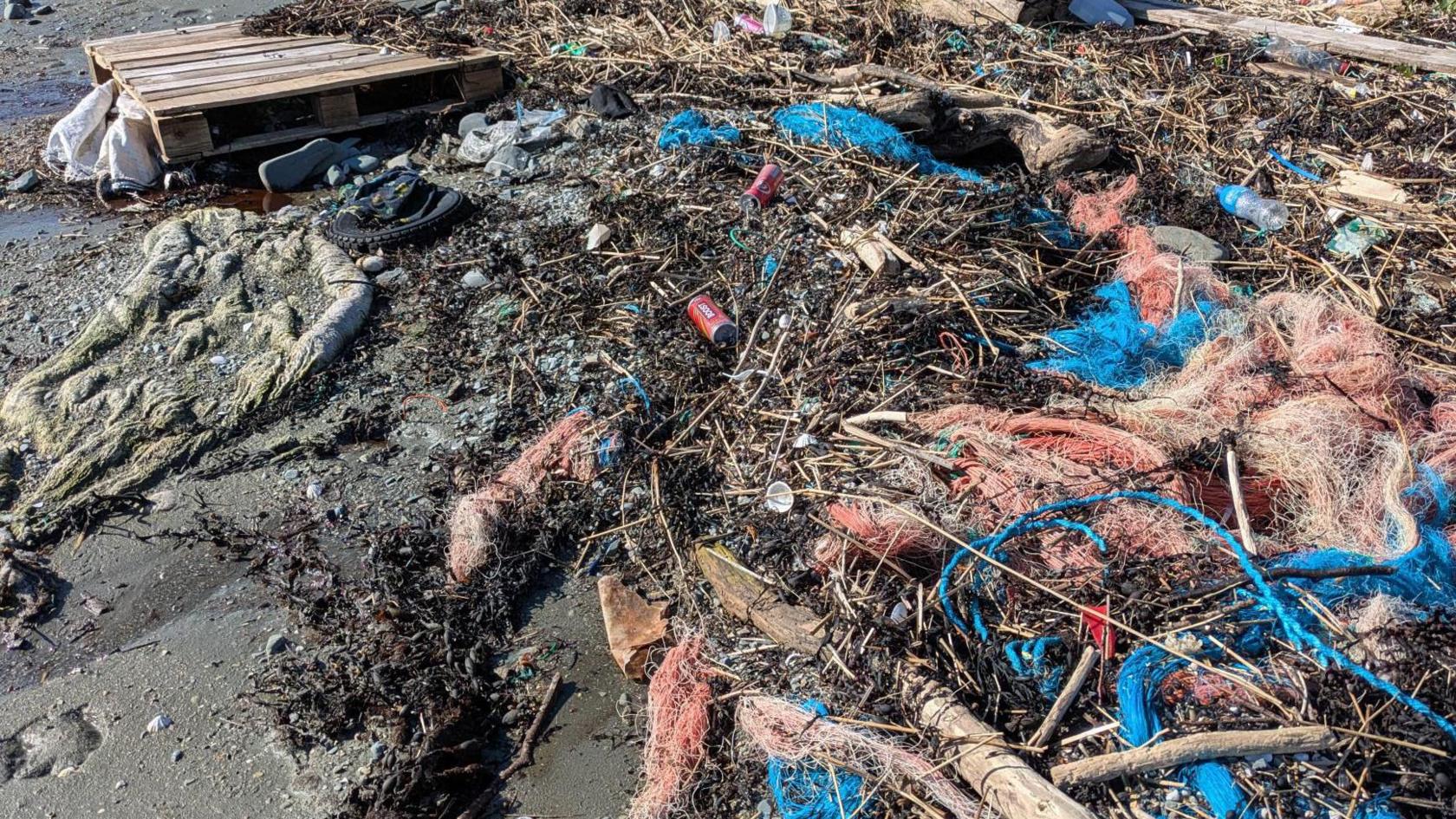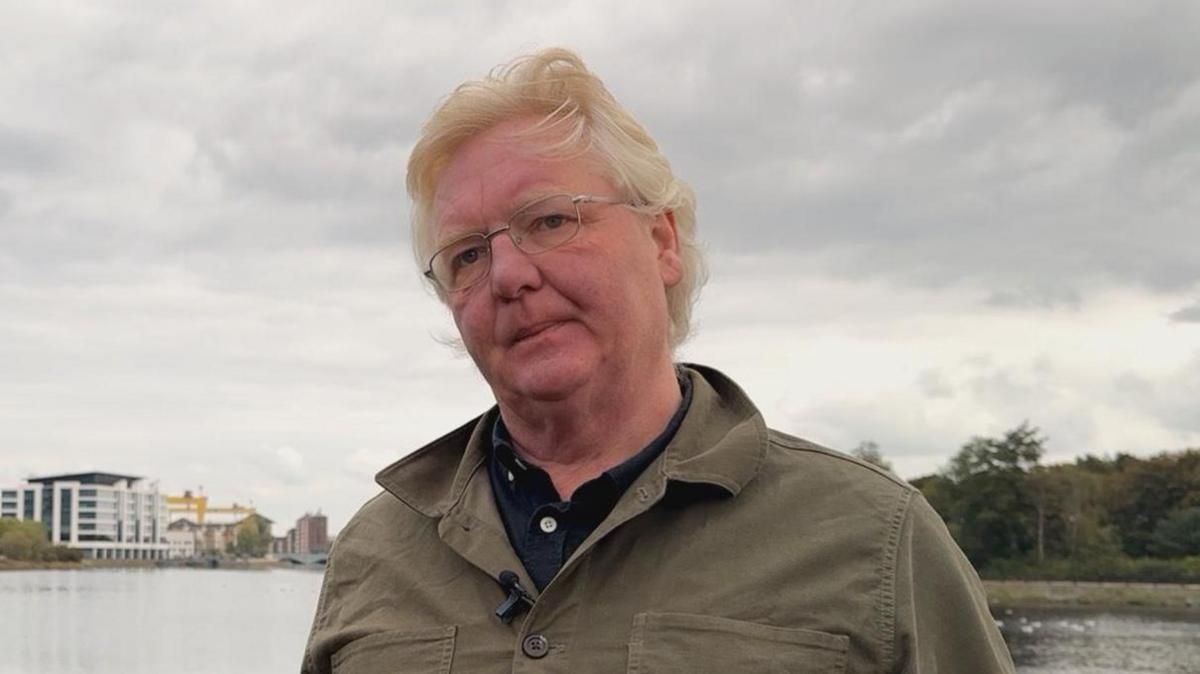Plastic still makes up the majority of waste on NI's beaches

- Published
The amount of plastic waste on Northern Ireland's beaches has fallen, but it still accounts for 84% of the litter found, new figures show.
The latest Marine Litter Report, external from Keep Northern Ireland Beautiful (KNIB) recorded an average of 341 items of litter per 100m of beach in 2024.
The chief executive of KNIB, Eric Randle, said the report highlighted the need to "keep pushing forward" on reducing litter.
Agriculture, Environment and Rural Affairs Minister Andrew Muir said "everyone has a role to play" in tackling the "persistent problem" of litter.
What litter was found on NI beaches?

Ardglass is one of many beaches in Northern Ireland where plastic waste accounts for more than 80% of litter found
A total of 17,575 items of litter were recorded across the 12 beaches surveyed in Northern Ireland in 2024.
A significant amount of drink-related litter also made the "terrible 10" list of the most observed items.
Plastic and polystyrene fragments sized under 2.5cm topped the list, followed by tangled fishing nets, rope, string, and cord with a diameter of less than 1cm.
Under Northern Ireland's Environmental Improvement Plan, an Extended Producer Responsibility scheme will be phased in from 2025, as part of UK-wide plans to tackle waste from packaging.
A Deposit Return Scheme, returning a small deposit on single use drinks containers to consumers, is scheduled for UK implementation in October 2027.
How is waste counted?
The Marine Litter Report has been carried out annually since 2012, using the OSPAR Commission's methodology, external.
It brings together 15 governments and the European Union to protect the North East Atlantic marine environment.
More than 70 beaches are monitored in each of the four seasons, during defined survey periods.
In Northern Ireland, samples are taken from 12 beaches.
Each beach is cleaned within two weeks of the survey to ensure the amount of marine litter is not being duplicated.
The results from each survey are added to a central database.
Related topics
- Published5 July 2023

- Published25 September

